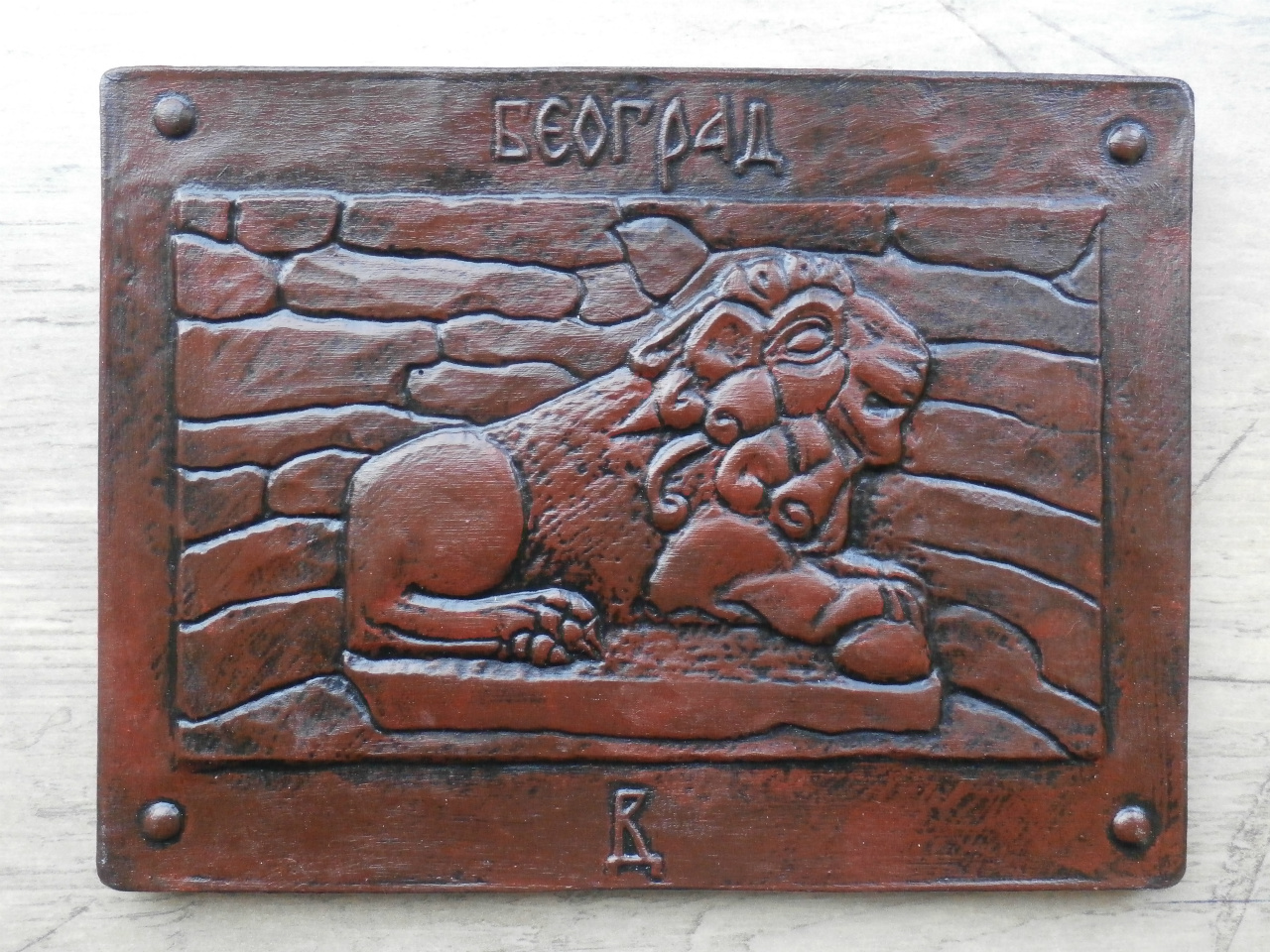Лав - Римски бунар
Римски бунар су градили Аустријанци у периоду 1717-1731. год.Тада му је назив био Велики бунар.У потрази за водом Аустријанци су се спустили до 55 м , али воду нису нашли.Бунар је дном испод нивоа Саве.Вода која је у њему је површинска вода која се слива кроз зидове бунара. Бунар је широк 3.4 метра, низ чији цилиндар је у два реда распоређено спирално степениште од 212 степеника.Једне су служиле за спуштање, а друге за пењање људи и стоке.На дубини од око 35 метара се налази полукружно степениште. Скулптура каменог лава се налази на почетку улазног ходника и представња римско културно наслеђе из IV века. Лав као симбол представља и део историје града, јер је био заштитни знак IV Флавија Феликс легије(I-V век н.е.) чије је седиште био Београд.Легија је овековечена у филму „ Гладијатор“ у лику генерала Максимуса Децимуса Меридијуса кога је тумачио Расел Кроу.
Римский колодец
Римский колодец построен австрийцами в период с 1717 по 1731 гг. Тогда он назывался Большой колодец. В поисках воды австрийцы спустились на глубину 55 м, но воды так и не нашли. Дно колодца расположено ниже уровня реки Савы, поэтому в колодец поступают поверхностные воды, проникающие сквозь стенки колодца. Ширина колодца 3,4 метра. Вдоль его стенок в два ряда расположена винтовая лестница, состоящая из 212 ступенек. Одна лестница служила для спуска, а другая - для подъема людей и скота. На глубине около 35 м расположена полукруглая лестница. В начале коридора установлена каменная фигура льва, являющаяся римским культурным наследием IV века. Лев как символ олицетворяет собой часть истории города, так как он был эмблемой IV Счастливого Флавиева легиона (I-V век н.э.), который размещался в Белграде. Легион увековечен в фильме «Гладиатор» в образе генерала Максимуса Децимуса Меридиуса, роль которого сыграл Рассел Кроу.
Der Römische Brunnen
Der Römische Brunnen wurde von den Österreichern zwischen 1717-1731 erbaut. Damals nannte man ihn den Grossen Brunnen. Auf der Suche nach Wasser stiegen die Österreicher auf 55 m hinab, fanden aber kein Wasser. Der Brunnen ist auf dem Grund unter dem Wasserspiegel der Save. Das Wasser, dass sich in ihm befindet ist Oberflächenwasser, das durch die Wände des Brunnens fliesst. Der Brunnen ist 3,4 Meter weit, entlang seines Zilinders ist in zwei Reihen eine spiralförmige Treppe mit 212 Sufen angelegt. Eine Treppe diente zum Abstieg, und die andere zum Aufstieg von Menschen und Vieh. In einer Tiefe von 35 Metern befindet sich eine Wendeltreppe. Die Skulptur eines steinernen Löwen befindet sich am Anfang der Eingangshalle und sie stellt ein römisches Kulturerbe aus dem IV. Jahrhundert dar. Der Löwe als Symbol stellt auch einen Teil der Stadtgeschichte dar, da er das Signum der Legio IV. Flavia Feilix (I-V v. Chr) war, die ihren Sitz in Belgrad hatte. Die Legion wurde im Film „Gladiator“ verewigt, in der Figur des Generals Maximus Decimus Meridius, der von Russell Crowe verkörpert wurde.
Roman well
The Roman well was built by the Austrians in the period from 1717 to1731. At that time it was called the Big well. In search of water the Austrians dug down to 55 m, but found no water. The bottom of the well is below the level of the Sava River. The water in it is the surface water which is pouring through the walls of the well. The well is 3.4 meters wide, down the cylinder of which go two rows of spiral staircases of 212 stairs. One was used for men and cattle to go down and the other to climb up. At the depth of about 35 m there is a semicircular staircase. Stone lion sculpture is located at the beginning of the hallway and represents a Roman cultural heritage of the fourth century. The Lion represents a part of the history of the city, because it was a trademark of IV Flavia Felix Legion (fourth century BC), whose headquarters was in Belgrade. The legion was perpetuated in the movie "The Gladiator" in the person of General Maximus Decimus Meridius played by Russell Crowe.
